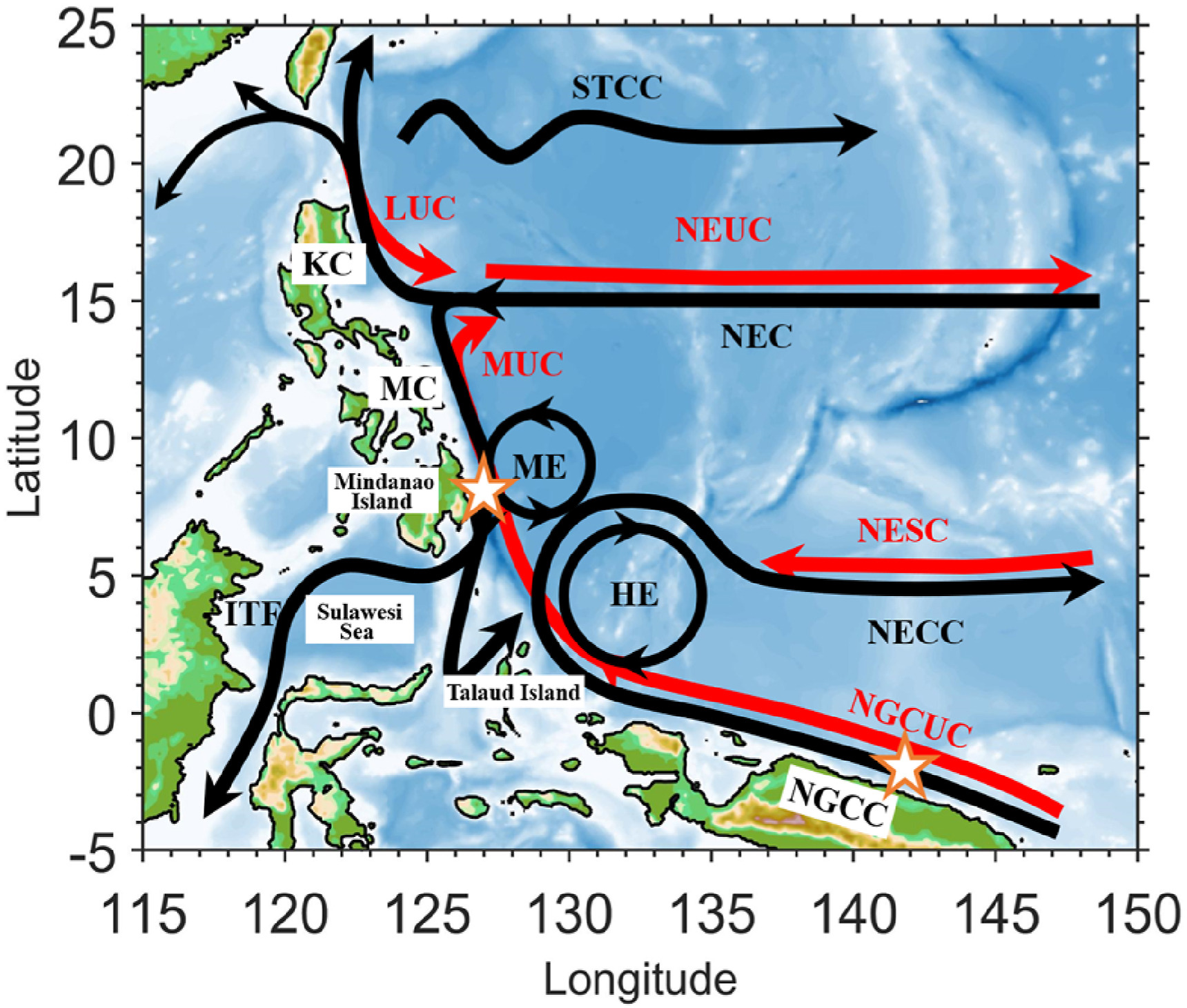Yuchao Hui, Linlin Zhang, Xiaomei Yan, Mengmeng Li, Fan Wang, Dunxin Hu
Published in Deep Sea Research, June 2024
The eddy-mean flow interactions are critical processes in the ocean energy cycle. This study investigated the energetics of eddy-mean flow interactions in the western tropical Pacific Ocean using the multiscale window transform (MWT) and MWT-based canonical transfer theory, based on 16-year numerical outputs from the Ocean General Circulation Model for the Earth Simulator and two mooring measurements. Energy analysis revealed that prominent eddy kinetic energy (EKE) appears in the upper layer of the Sulawesi Sea and the source region of North Equatorial Countercurrent (NECC), and in the subsurface layer along the Philippine coast. The kinetic energy in the upper layer is mainly transferred from the mean flow to the eddy field through barotropic instability. Below the thermocline, the prominent subsurface EKE is not only caused by barotropic conversion, but also by baroclinic one. Subsurface mesoscale eddies east of the Mindanao Island extract energy from mean flow through barotropic instability, and those further north seem to release their kinetic energy to the mean flow of North Equatorial Undercurrent, indicating inverse energy cascades. Our results highlight that the advection effect plays a key role in the horizontal distribution of EKE, which generally shifts the high EKE area a few degrees downstream from the eddy formation region. Particularly, in the source region of NECC, the advection term shifts the EKE center 5° eastward from ∼132°E to ∼137°E.

Fig. Map of the western Pacific Ocean circulation system (referring to Fine et al., 1994). The mooring at 127°E, 8°N and 141.4°E, 1.7°S are marked using white stars, respectively.
Hui, Y., Zhang, L., Yan, X. et al. 2024. Energetics of eddy-mean flow interactions in the western tropical Pacific Ocean. Deep Sea Research. https://doi.org/10.1016/j.dsr.2024.104294